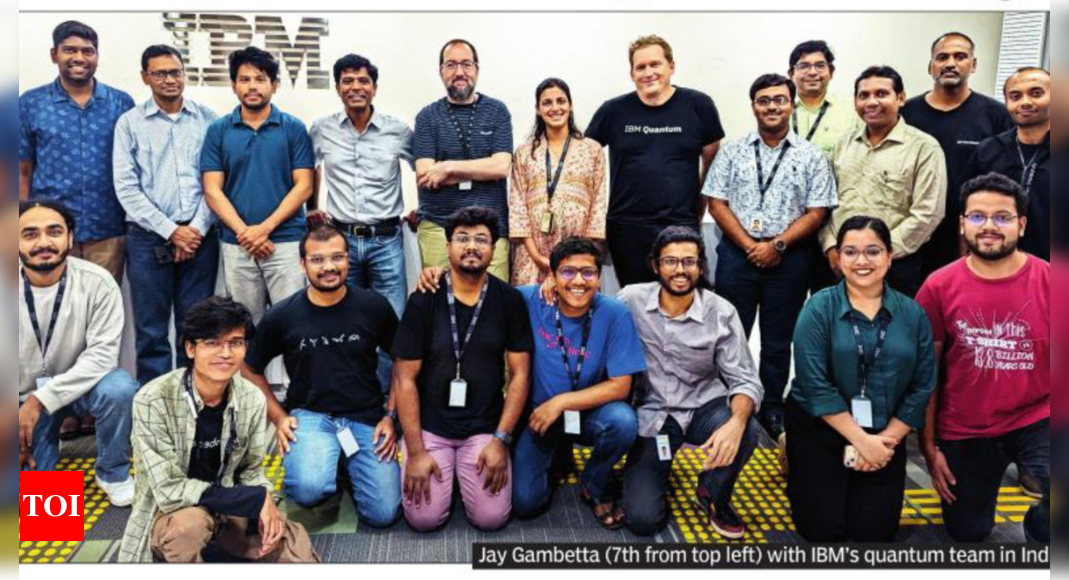
Within the sprawling panorama of technological innovation, few frontiers are as tantalising—or as advanced—as quantum computing. On the forefront of this revolution stands IBM, an organization with the best variety of quantum machines on this planet.
Jay Gambetta, IBM fellow and VP of IBM Quantum, is without doubt one of the specialists on the helm of the formidable endeavour to construct essentially the most subtle quantum computer systems.“We’ve been engaged on quantum itself for a very long time. Really, IBM dates again to the early creations of quantum info,” Gambetta explains.
The journey started in earnest in 2016 when IBM positioned a quantum pc on the cloud, making it accessible to researchers and fans worldwide. Since then, the corporate has constructed over 70 quantum computer systems, with about 20 constantly out there by means of cloud entry. The affect has been vital: customers have run roughly 3.2 trillion quantum circuits, leading to some 3,000 scientific papers, says Gambetta.
These aren’t your typical computer systems. Gambetta describes them as superconducting qubit-based machines that function at temperatures “a thousand occasions colder than outer house.” Their newest dependable quantum chip boasts round 100 qubits and might carry out as much as 15,000 gates—quantum operations that manipulate the qubits.
However the {hardware} is simply a part of the story. The true problem, in keeping with Gambetta, lies in making these highly effective machines helpful and accessible. “How do you really make them simpler to make use of? How do you create the software program? How do you create the blending of classical and quantum collectively?”
The longer term, as Gambetta sees it, isn’t about quantum changing classical computing. As an alternative, he envisions a world the place “bits, neurons, and qubits” work in live performance, with CPUs, GPUs, and QPUs (quantum processing models) functioning as an built-in system.
This imaginative and prescient is already taking form. IBM has constructed its first quantum information centre within the US, with a second underway in Europe. They’ve additionally put in programs in native information centres in Japan, Canada, Spain, and on the Cleveland Clinic, a non-profit educational medical centre within the US, with plans for one in South Korea and a second set up in Japan.
Nevertheless, the trail to widespread adoption is fraught with challenges. “It’s the primary time the precise mannequin of computation has modified,” Gambetta notes. This paradigm shift implies that even primary mathematical operations operate in a different way within the quantum realm.
“How do you debug a quantum pc? Even answering that query is a extremely laborious technical problem as a result of you possibly can’t simply go in the course of a quantum computation and cease it, as a result of you then kill all of the quantum coherences (the qubits are delicate and might get scrambled simply).”
To bridge this hole, IBM created Qiskit, an open-source quantum computing framework. It’s grow to be a cornerstone for quantum educa tion and growth, with India rising because the second-largest person base globally.
As quantum computing inches nearer to sensible purposes, the necessity for expert professionals grows. Gambetta emphasises the significance of a mix of mathematical prowess and coding abilities. “We’re on the stage the place we’re really rewriting how computing is completed,” he says, underscoring the distinctive alternative this presents for aspiring quantum engineers.
Wanting forward, Gambetta says IBM’s roadmap goals for quantum error correction machines by 2029, a milestone that might enable for quantum computations involving lots of of qubits and billions of gates. But, Gambetta is fast to level out that the timeline for industrywide adoption stays unsure. “The uncertainty of when that is going to have an enormous inflection within the business is dependent upon when the algorithms are found,” he explains.
The folks that uncover the algorithms will find yourself creating their very own firms, provides Gambetta. “That’s what occurred within the classical computing world.”
In India, IBM’s quantum group has been actively collaborating with educational establishments and authorities our bodies, contributing to the nationwide quantum mission. “The largest factor is the ecosystem work we’ve carried out,” Gambetta notes, highlighting the significance of bridging academia, business, and authorities in advancing quantum applied sciences.
Because the quantum computing panorama continues to evolve, one factor is obvious: the race is on to harness this transformative expertise. With IBM on the forefront, the quantum future could also be nearer than we expect— a future the place the once-impossible turns into routine, reshaping industries and pushing the boundaries of human information.
Adblock check (Why?)
